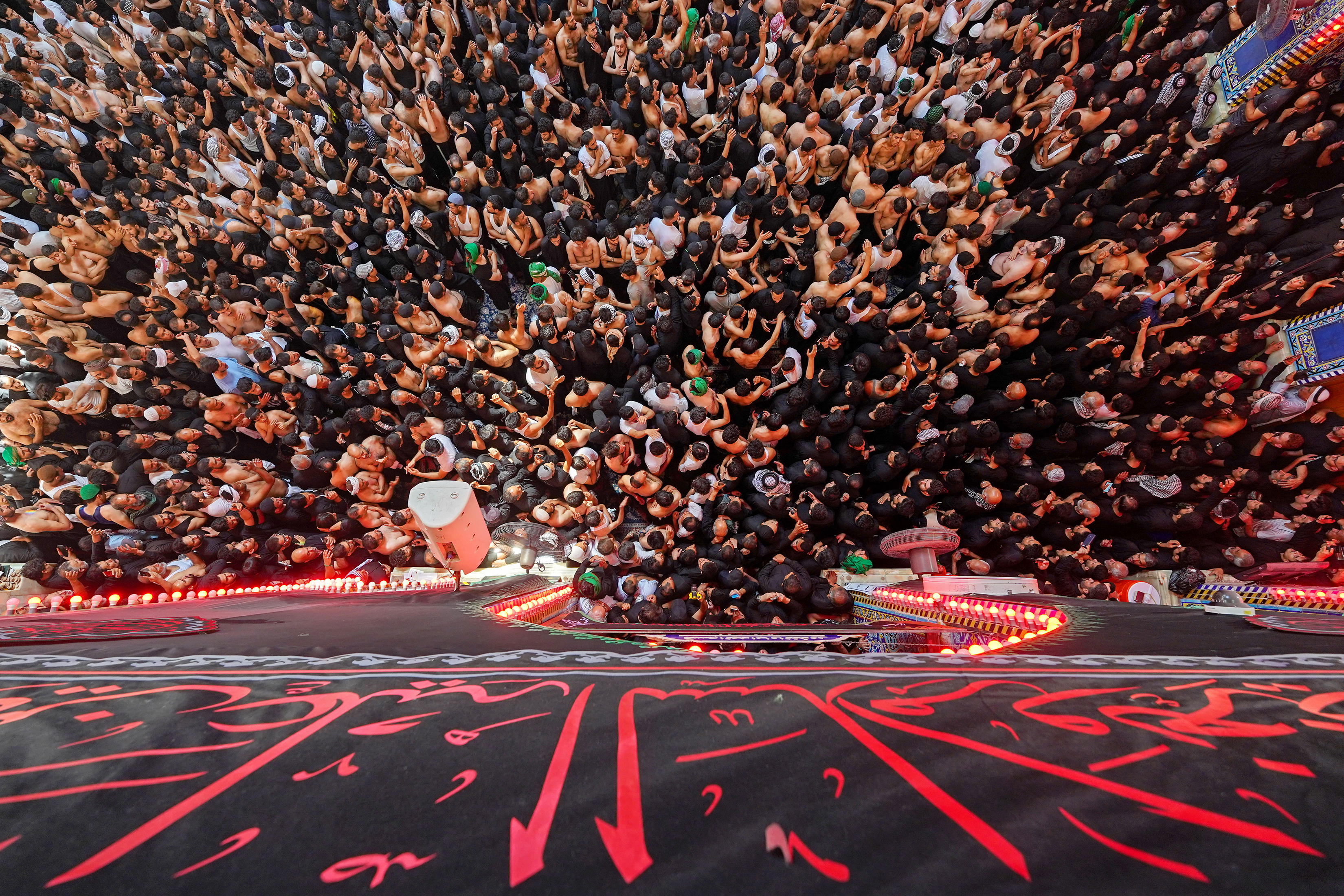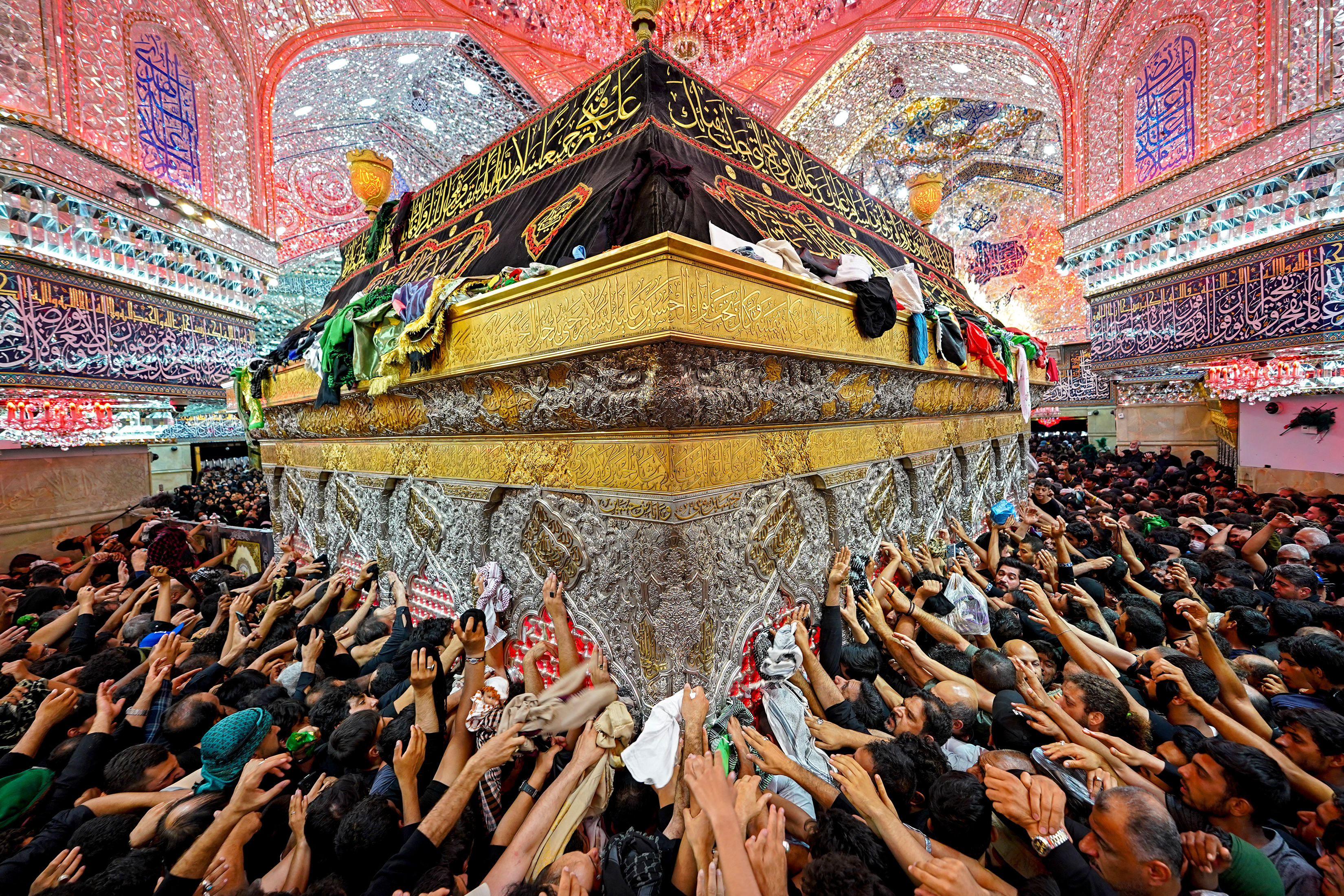

Usually on foot, for about 20 days, the pilgrims trek hundreds of kilometres from cities around Iraq and Iran to the holy city of Karbala where they commemorate the death in battle of Imam Hussein.
Hussein, the grandson of the Prophet Muhammad and son of Imam Ali, was killed in 680 AD on the plains of Karbala in a battle against the forces of the Caliph Yazid, whose ascendancy to the caliphate was contested.

To mark the 40th day of mourning for Hussein – the traditional mourning period – the pilgrims arrive in Karbala to pay tribute at his shrine, which is surrounded by millions on the final day of Arbaeen.
Along the route, volunteers set up stations to provide the pilgrims with food, water and shelter while people from the villages along the way keep their doors open to anyone who needs a place to stop.

Many pilgrims opt to walk 80km (50 miles) from the nearby city of Najaf, where Imam Ali, Hussein’s father, is buried, to Karbala.
Those who make the trip from distant cities, like Mashhad in Iran – 2,600km (1,600 miles) away – opt to drive.